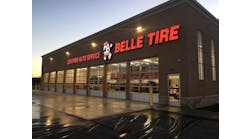Is “premium” replacing “performance” as the hot tire industry buzzword? I would say yes. Tire manufacturers have been quick to use it when sharing their marketing strategies with their dealers.
They don’t use the word carelessly or randomly, either. There is power behind its use. There is power behind the term “premium tire.”
Is a premium tire the new performance tire? Perhaps the evolution of the performance tire has reached a new stage of technological development. Performance tires became high performance tires, then ultra-high performance tires and finally, according to Tire Rack Inc., max performance tires. Maybe the metamorphosis is complete — premium is the new butterfly!
But the answer is no. All premium tires have strong performance characteristics, but not all performance tires — even UHP tires — fit the definition of premium.
What is the definition of premium? It varies. When Paolo Ferrari took over as chairman, CEO and president of Pirelli Tire LLC in 2012, he said one of his goals was to regularly introduce premium products into the marketplace. And he offered up a tangible definition of premium.
More than just speed ratings are involved, he said. The designation also includes tires 17 inches and above. Sort of sounds like the definition of performance tires, doesn’t it?
He even went further, coining the phrase “super premium” for tires 18 inches and above.
Ferrari, however, also takes into account the tire segment. The Pirelli P Zero Nero GT, for example, is a premium UHP tire. The Scorpion Verde All Season Plus is a premium highway SUV/CUV tire.
Tire Rack sees a correlation between the vehicle and the tire, at least at the original equipment level. A “premium” vehicle such as a C7 Corvette or Dodge Challenger requires different performance tire designs than a mid-level or entry-level vehicle.
Jack Winterton, president of consumer tires for Goodyear Tire & Rubber Co.’s North American Tire business unit, says the end user ultimately defines what is premium and what is not.
“It’s the willingness for consumers to pay more for the value they are going to get. And a lot goes into that — the brand value and all the features and benefits.”
Whether they are defined by tire manufacturers or OEMs or vehicle owners, premium tires are marketed as the best of the best, at least for now.
Pirelli estimates premium SUV, CUV and light truck tire sales will outpace the 16-inch and less market segment this year. As premium becomes broad-line, a new category might be in order. Off the top of my head, I suggest max premium. — Bob Ulrich
If you have any questions or comments, please email me at [email protected].




